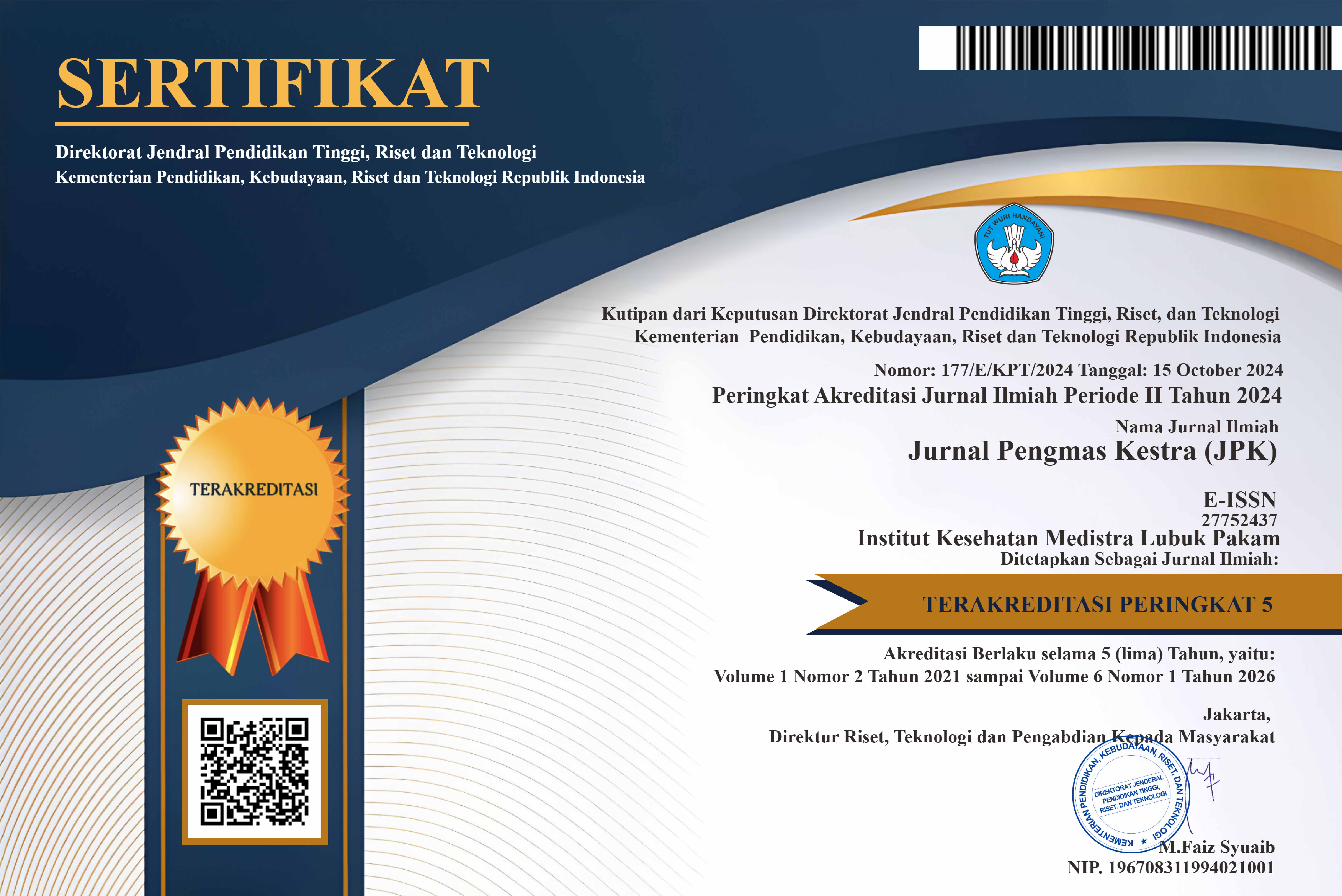SOCIALIZATION OF RHODAMIN B DYE CONTENT IN FLAVORED DRINKS TRADED IN LUBUK PAKAM WHICH WAS ANALYZED WITH UV-VIS SPECTROPHOTOMETRY
DOI:
https://doi.org/10.35451/jpk.v2i1.1134Keywords:
Flavored Drinks; Rhodamine B; UV-Vis SpectrophotometryAbstract
At this time many flavored drinks are traded in the market. Flavored drinks or what are often referred to as soft drinks are the terms used to describe the types of drinks that are sold in special packaging so that they can be consumed directly without having to be processed first. At this time the dyes that are often used in processed foods or beverages are divided into natural dyes and synthetic dyes. Synthetic dyes are generally made from chemicals. Sometimes entrepreneurs who want to make big profits use non-food grade dyes to give color to food or drinks. Rhodamine B textile dye is a synthetic dye in the form of a green or reddish-purple crystalline powder at high concentrations, while at low concentrations it is light in color and belongs to the basic xanthene group. Rhodamine B is made from raw materials of meta-diethylaminophenol and phthalic anhydride. These two raw materials are not edible but are only used for dyeing textiles, paints, paper, or clothing. These substances are often misused as food coloring and cosmetics in many countries. Foods found to contain Rhodamine B included crackers (58%), shrimp paste (51%), and snacks (42%). Rhodamin B is found in confectionery, syrup, sweets, dawet, porridge, smoked fish and cendol. Red-flavoured drinks that are traded in the Lubuk Pakam area contain Rhodamine B dye.
Downloads
Published
Issue
Section
License
Copyright (c) 2022 JURNAL PENGMAS KESTRA (JPK)

This work is licensed under a Creative Commons Attribution 4.0 International License.
Copyright in each article is the property of the Author.




















